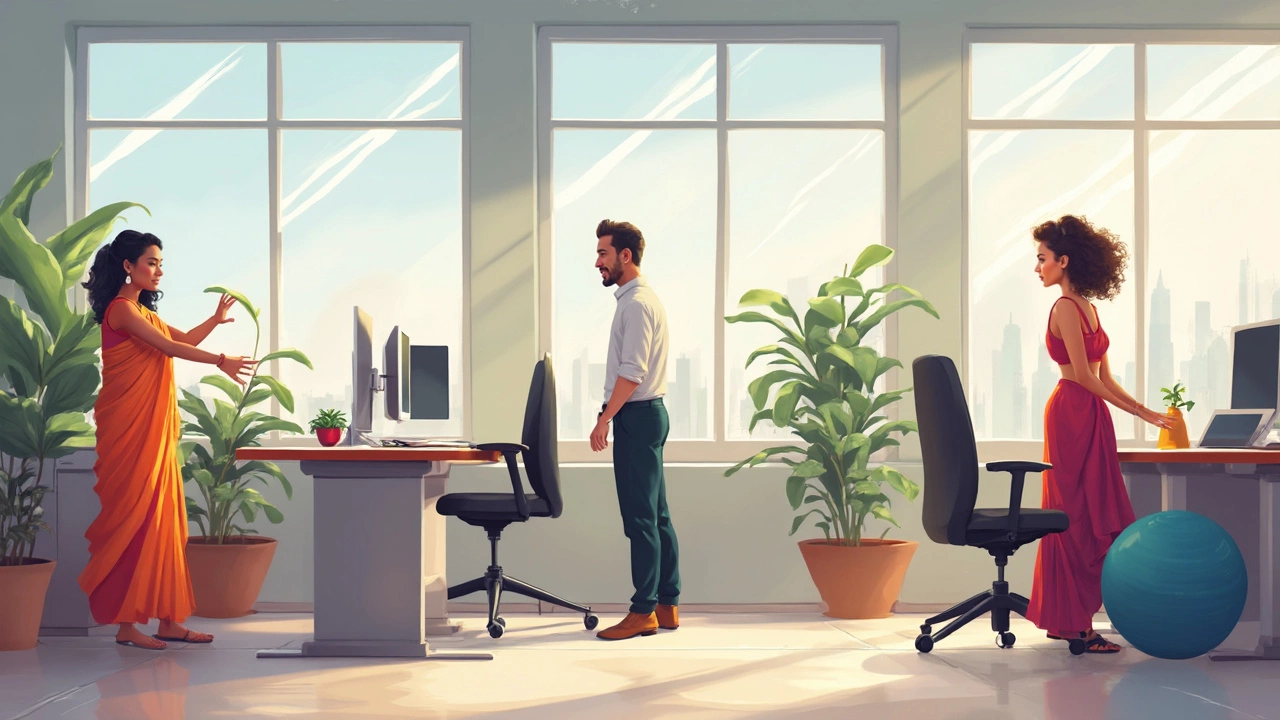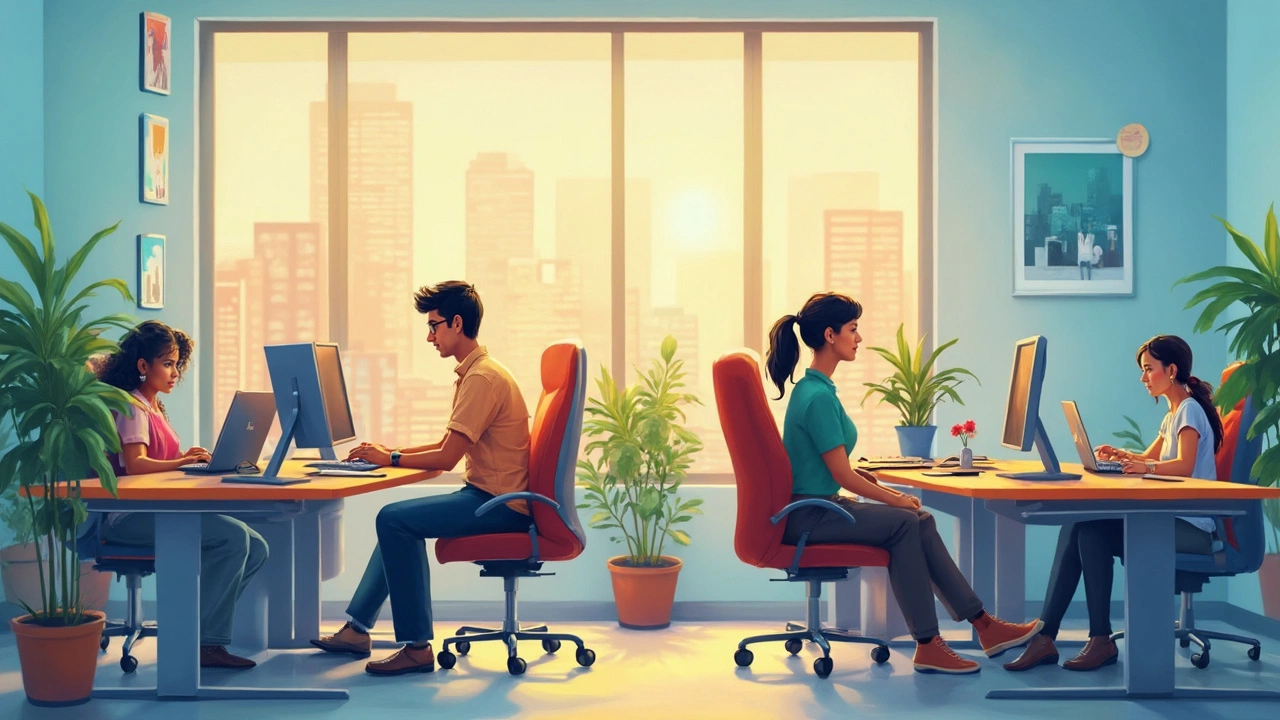You scroll through your inbox, get lost in a spreadsheet, join Zoom calls, munch through lunch — and boom, it's evening. The chair’s become your second home and your legs feel like they’ve gone missing. But ask yourself: is parking yourself in a chair all day really harmless? Or is it quietly messing with your body in ways you don’t even feel yet? Most of us spend more than half our waking hours sitting, and that number’s been ticking upwards lately, with remote work making the kitchen table the new office.
Sure, chairs are comfy and they beat standing in line, but our bodies didn’t evolve to sit hunched for eight or ten hours straight. “Sitting is the new smoking,” say health experts, maybe a little dramatically. But they’re not totally wrong. There’s piles of research now showing that sitting too much is tied to stuff you don’t want, like back pain, heart problems, and even a shorter life. But it's not all doom and gloom — there are ways to outsmart your chair, even if you're glued to it all day.
What Happens To Your Body When You Sit All Day?
Your body remembers. Doesn’t matter if you hit the gym at 6 am — if you spend the next 10 hours glued to your chair, your health gets dinged. Here’s the first crazy stat: the average office worker sits for about 10 hours a day, according to a 2024 report from the CDC. That’s roughly two-thirds of your waking life — and it adds up fast. It’s not just a stiff back or a numb butt (though if you know, you know). Bones, muscles, heart, even your brain can get out of sync.
Your metabolism slows down. Enzymes that help burn fat switch off. Blood tends to pool in your legs, making it tough for your heart to pump things back up. This makes a perfect storm for higher cholesterol, higher blood sugar, and even higher risk of diabetes. A big study from the British Journal of Sports Medicine found that people who sat for 8+ hours daily had a 20% higher risk of early death from anything — not just heart disease, but even certain cancers.
Your muscles start to forget how to ‘wake up.’ Sitting shrinks and tightens your hip flexors (those deep muscles at the front of your hips), and weakens your glutes, which do so much more than just padding your jeans. When your hips are tight, your posture tilts forward and your back can spasm just standing up. Ever wonder why your neck and shoulders seize up during a stressful week? Slouching over a screen all day crunches your spine, compresses nerves, and leaves your upper back screaming for mercy.
Even your brain feels it. Lack of movement means less fresh oxygen-rich blood moving up top. You get sluggish, find it harder to focus, maybe even feel down. Studies from the University of California have shown that office workers who break up their sitting with even tiny walks perform better at memory and reaction tests. Staring into screens without moving? That brings digital eye strain, dry eyes, and even headaches.
Let’s break down some of the hidden impacts in a quick table:
| Body System | Impact of Prolonged Sitting |
|---|---|
| Muscles & Joints | Weaker glutes, tight hips, back pain, poor posture |
| Heart & Vessels | Slower blood circulation, raised risk of blood clots |
| Metabolism | Lower calorie burn, increased risk of diabetes |
| Brain & Eyes | Reduced attention, higher fatigue, digital eyestrain |
| Life Expectancy | 20% increased risk of early death if sitting 8+ hours/day |
Yet, here's the odd twist: lots of folks hit the gym after work, so that should balance it out, right? Not exactly. According to Mayo Clinic, a daily run doesn’t erase the effects of sitting most of the day. It helps (don’t ditch the sneakers), but regular movement throughout the day is what really hacks the risk down.

Sneaky Ways To Move More — Even If You Can’t Leave Your Chair
You don’t need to quit your desk job or invest in a treadmill that doubles as a desk. Tiny habits can make a real difference, and most aren’t going to eat up your work day. Remember, the trick isn’t heroic workouts, it’s breaking up those long stretches where you won’t budge. Some of these tips sound silly, but trust me, they work.
- Set a timer every hour to stand up and stretch, even for just 2-3 minutes. Harvard researchers found people who moved every 30 minutes had far lower health risks.
- Take your calls standing up or pacing. Walking meetings boost creativity, so you may even look smarter on that sales call.
- Swap your regular chair for an exercise ball for a few hours — it wakes up your core muscles and forces a straighter posture.
- Try “deskercise”: calf raises while reading emails, triceps dips using your chair, seated marches, or shoulder rolls while reviewing a report.
- Put your printer or trash can across the room, so you have to get up to use them. Those little trips add up.
- Stash a resistance band in your drawer. Quick mini-sets (pull-aparts, rows) wake up sleepy muscles in seconds.
- If you can, sneak in a quick walk after lunch. Even five minutes helps regulate your blood sugar and wakes you out of that 2 pm slump.
The real game-changer: sitting all day isn’t just about your chair. It's about shaking up your routine with movement you’ll actually stick to. If you can grab a sit-stand desk or convert your kitchen counter into one, even better. The 20-8-2 rule — sit for 20, stand for 8, move for 2 — is a game plan that’s caught on with big tech companies. Hospitals now even prescribe ‘sit less’ as part of care for back pain and diabetes.
But also, know your body. Some folks with arthritis or aching joints might need more gentle movement or breaks. If you’re recovering from an injury or deal with chronic aches, ask your doctor for a game plan. Physical therapists will vouch: small, regular movement always beats heroic sprees done once a week.

The Future of Sitting: How Your Chair Could Work For (Or Against) You
Let’s be honest — jobs that keep you on your feet are rare. Most of us aren't going to deliver mail or work behind a bar. Our chairs aren’t vanishing anytime soon, but design and science are catching up. Office furniture and tech now promise to make sitting less of a health hazard. Some companies offer ergonomic “dynamic seating” that lets your chair tilt and move in ways that wake up different muscle groups as you work. These aren’t just cool gadgets; studies show dynamic or supported-movement seating reduces pain and improves focus.
Then there’s the new wave of sit-stand desks, under-desk treadmills, and even chairs that wake up your core and keep blood moving. These aren’t just Silicon Valley fads; mainstream companies are now shelling out for desk upgrades to keep their teams sharper and cut down on sick days. A 2025 survey by the American Society of Interior Designers found that 47% of companies had adopted some kind of sit-stand or active furniture because their teams asked for it — and absenteeism dropped by 11% in those offices.
But don’t fall for the trap that any fancy chair fixes your habits. Even the world’s best ergonomic throne won’t fix a slouching, still body. Here’s a checklist to boost your sitting IQ, no gear required:
- Plant your feet flat on the ground, knees bent at 90 degrees, hips level or a tiny bit higher than knees.
- Keep your screen at eye level, about an arm’s length away — your neck will thank you.
- Relax your shoulders, elbows bent at 90 degrees, wrists in a neutral (not bent) position.
- Use a lumbar pillow or rolled-up sweater to support your lower back.
- Don’t cross your legs for long — it throws off your posture and slows blood flow.
The workspace you build matters, but your habits matter more. If you’re exiling yourself to your chair by necessity, make it a contract: move every hour, retool your setup, steal moments to stand, and rethink those endless seated stretches. Even without gadgets or gym hours, you can game your routine and feel the difference in just a week. Try it and see. You just might never look at your desk chair the same way again.

